1. The Asteroid Impact
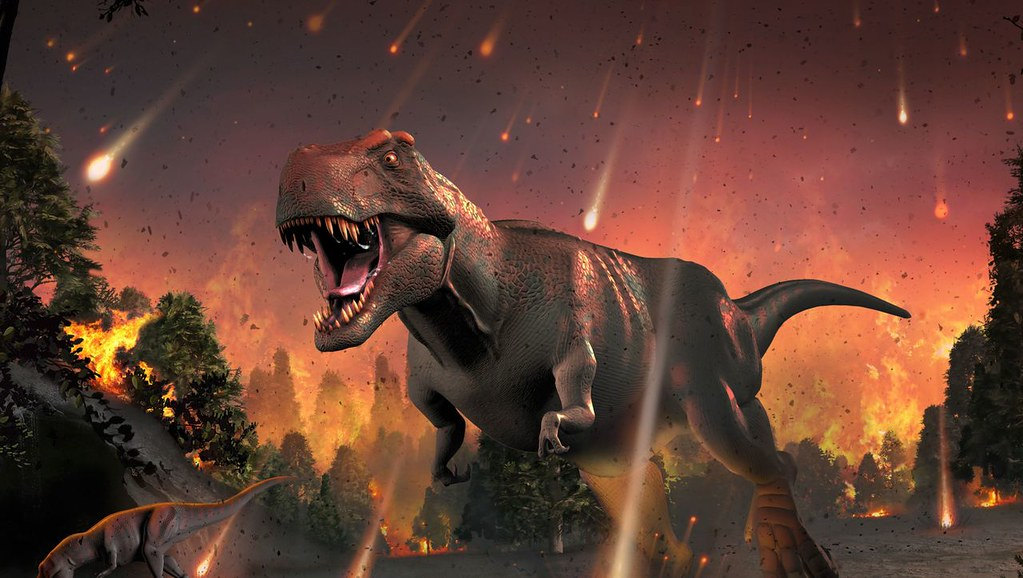
Flickr
One of the most significant events on the last day of the dinosaurs was the impact of a massive asteroid, roughly 6 miles wide, which struck what is now the Yucatán Peninsula in Mexico. The force of this impact released energy equivalent to billions of atomic bombs, sending shockwaves through the Earth and setting off a chain of global catastrophes. The explosion caused widespread fires, tsunamis, and volcanic activity, leading to an extended period of darkness and climate chaos. This event is widely believed to have been the primary cause of the extinction of the dinosaurs.
2. Massive Earthquakes
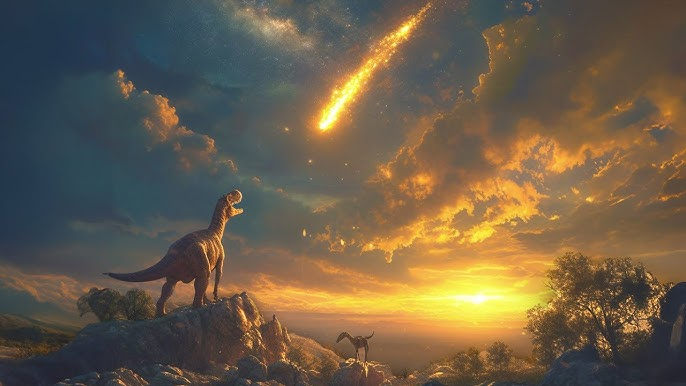
YouTube
The asteroid impact was so powerful that it generated massive earthquakes, shaking the Earth with unprecedented intensity. These earthquakes would have been felt all over the planet, with tremors strong enough to trigger landslides, crack the Earth’s surface, and cause widespread destruction. The seismic waves likely traveled across continents, shaking even the most stable areas. As the impact sent ripples through the Earth’s crust, these earthquakes would have altered landscapes and ecosystems, further exacerbating the environmental devastation caused by the asteroid itself.
3. A Global Wildfire
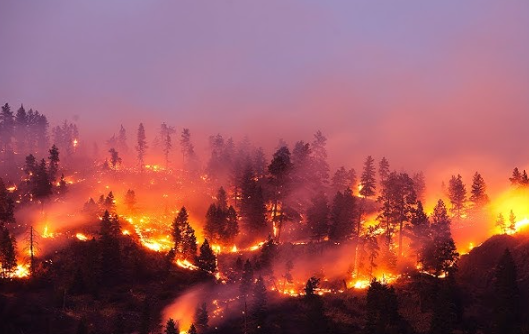
YouTube
In addition to earthquakes and tsunamis, the heat generated by the asteroid’s collision ignited massive wildfires across the globe. These fires were likely fueled by the debris, including plant material, ejected into the atmosphere. Wildfires would have burned for days or even weeks, consuming vast forests and leaving a trail of destruction in their wake. The soot and ash from these fires would have been released into the atmosphere, contributing to the darkening of the sky and blocking sunlight, further disrupting the planet’s climate and making survival even more difficult for life forms.
4. A Tsunami of Destruction
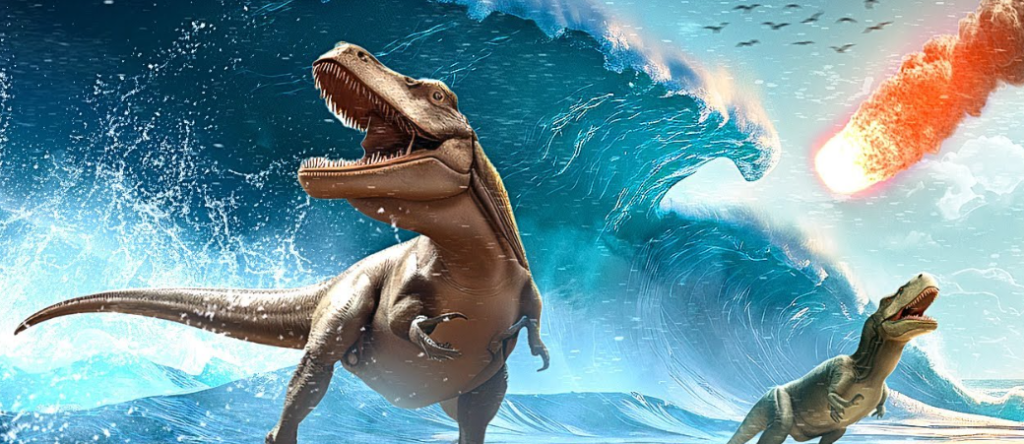
YouTube
The asteroid impact caused massive tsunamis, with waves that were likely several hundred feet high. These tsunamis swept across the oceans, devastating coastal ecosystems and flooding large areas of land. Marine life was severely impacted as the tidal waves inundated shallow coastal regions and coral reefs. Some of the most affected species were marine reptiles like mosasaurs and plesiosaurs, as their environments were rapidly destroyed by the rising waters. These waves would have caused chaos for any animals unlucky enough to be near the coast, leading to widespread loss of life.
5. A ‘Nuclear Winter’ Begins
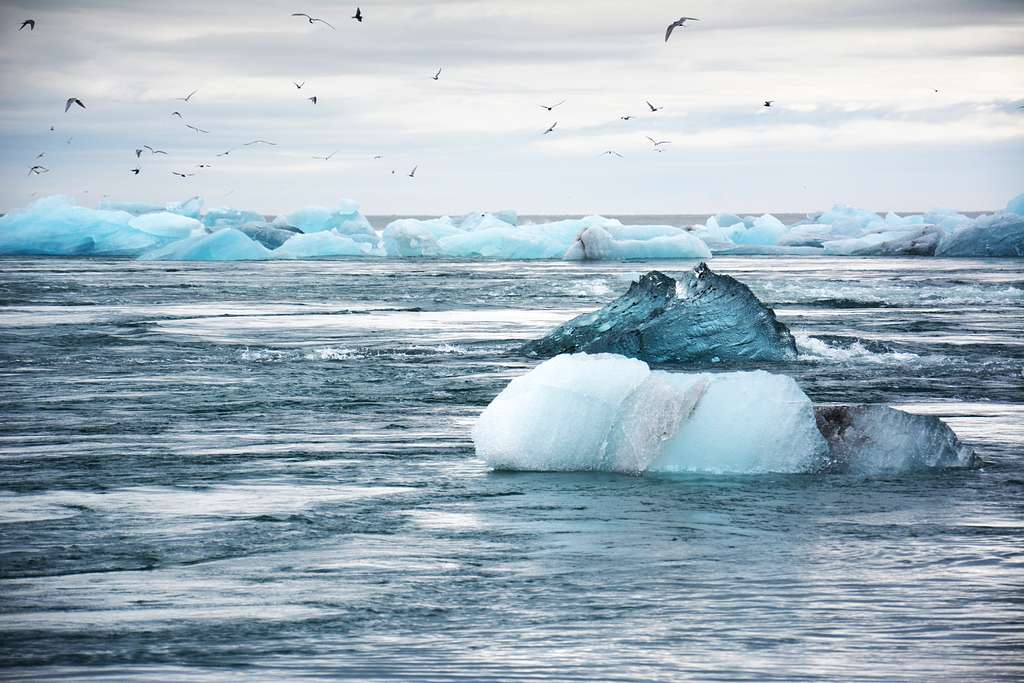
PICRYL
Following the asteroid impact, the Earth’s atmosphere became filled with debris, soot, and ash, blocking sunlight for an extended period. This phenomenon, known as “nuclear winter,” caused global temperatures to plummet. The decrease in sunlight would have disrupted photosynthesis, causing plants to die and creating a food crisis for herbivores and, by extension, the carnivores that depended on them. The resulting cooling effect drastically altered the planet’s climate, plunging Earth into a cold, dark state that persisted for months or even years, causing widespread extinction.
6. The Sun Disappears

Flickr
With the dust and debris blocking sunlight, the Earth experienced a sort of permanent twilight for a significant period after the impact. This darkness would have been catastrophic for plants, which rely on sunlight to grow. Herbivorous dinosaurs and other creatures that depended on plant life for food were left to starve. The lack of sunlight would also have had a domino effect on ecosystems, disrupting the entire food chain. Without the sun, temperatures dropped dramatically, and the planet’s ecosystems faced collapse as temperatures plummeted and darkness took hold.
7. Mass Extinction of Plants
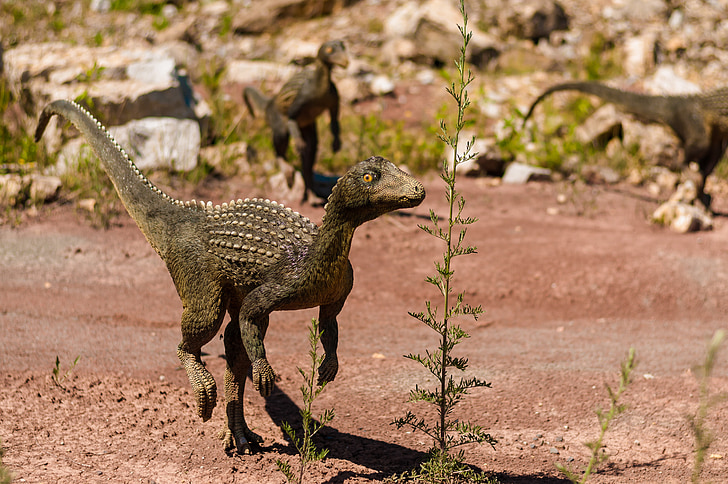
PickPik
As the asteroid’s impact and subsequent events blocked out sunlight, plants on Earth began to die off. With no light for photosynthesis, most plant life quickly perished, throwing ecosystems into disarray. Herbivores that relied on these plants for food quickly began to starve. These plants, which included both land-based vegetation and aquatic plants in rivers and lakes, were critical to the survival of many species. As they vanished, the herbivores that fed on them—along with the carnivores that preyed on those herbivores—faced extinction, as the food chain collapsed around them.
8. The End of the Dinosaurs
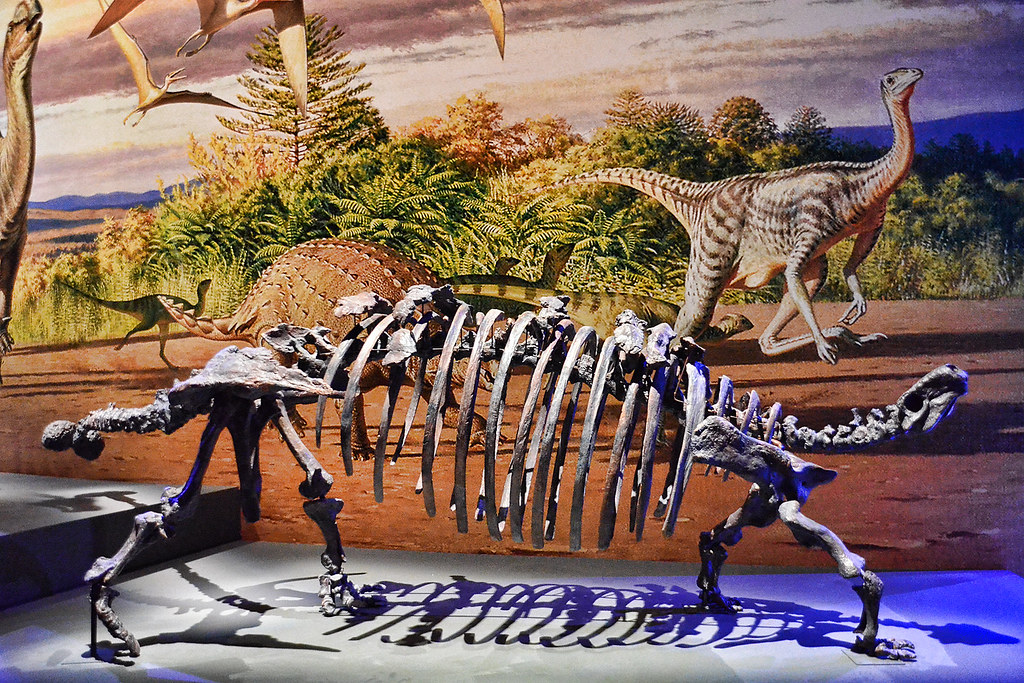
Flickr
The asteroid impact, along with the resulting environmental changes, caused the extinction of around 75% of life on Earth. Dinosaurs, along with many other species, vanished within a relatively short period. The combination of climate change, loss of food sources, and the direct impact of the asteroid made survival nearly impossible for the giant creatures that had ruled Earth for over 150 million years. As the dust settled and the Earth began its slow recovery, the age of the dinosaurs came to an abrupt and tragic end.
9. The Great Ice Age Begins
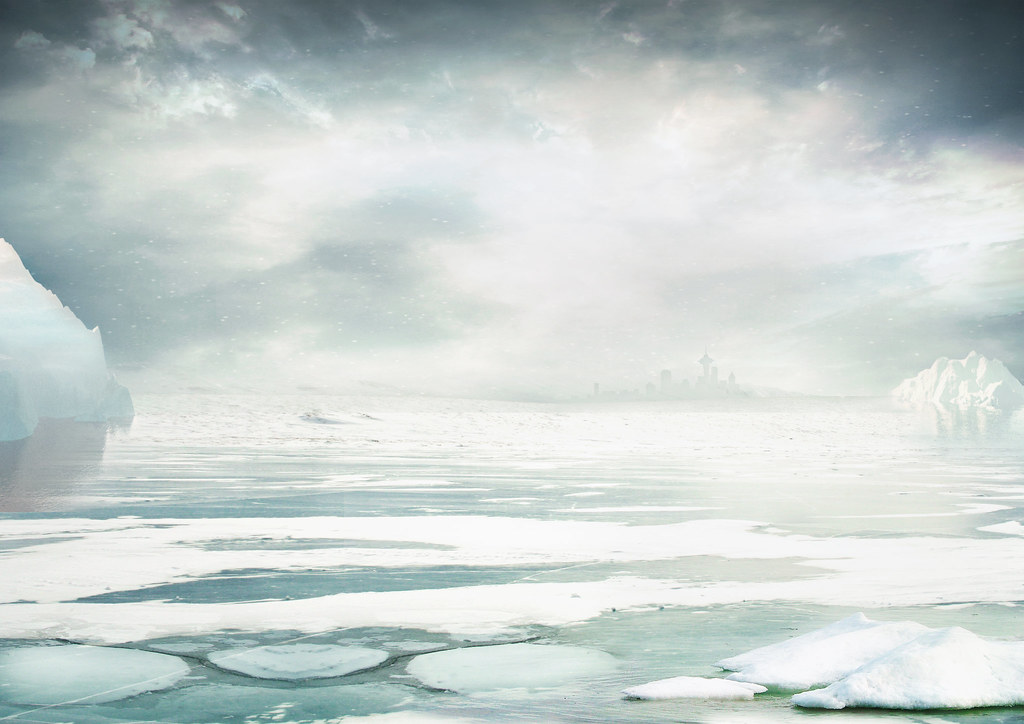
Flickr
Following the asteroid impact, global temperatures plunged, causing the Earth to enter a cooling period that would last for thousands of years. This sudden and dramatic shift in climate led to the beginning of an ice age. The Earth’s ecosystems, already devastated by the initial destruction, now faced even harsher conditions. As temperatures continued to fall, the environment became less hospitable to the surviving species, further intensifying the mass extinction event. The cold temperatures made it harder for plants to grow, contributing to the collapse of ecosystems and making survival even more difficult.
10. The Rise of Mammals
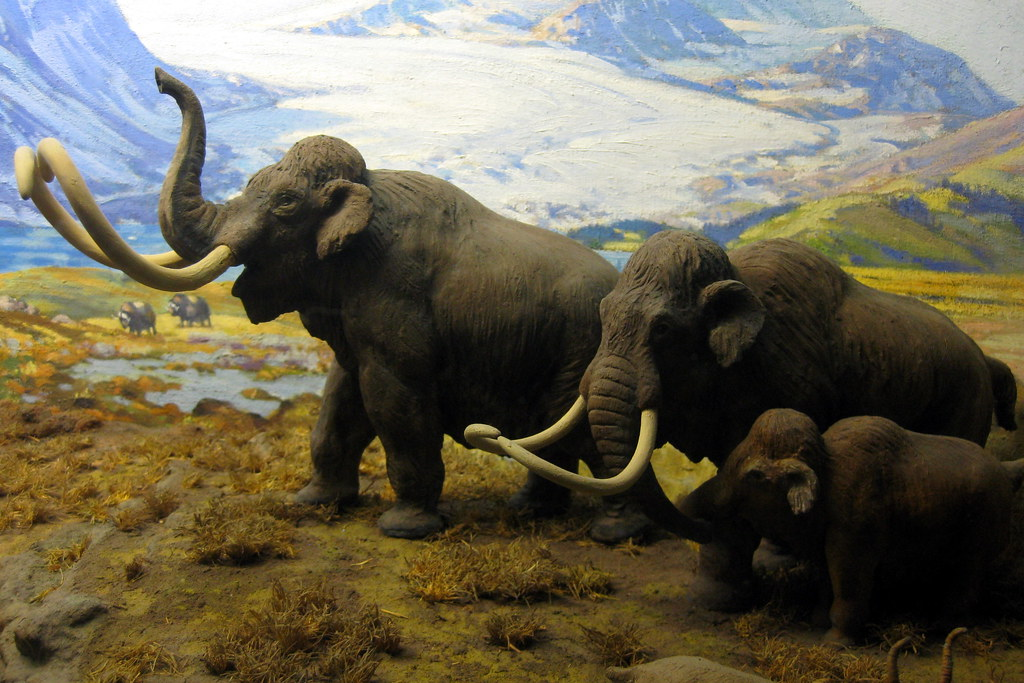
Flickr
With the dinosaurs gone, the survivors of the extinction event were left to fill the ecological niches left by the giant reptiles. Among the winners were mammals. With the extinction of many large predators and herbivores, mammals were able to thrive and evolve rapidly. This period of ecological recovery set the stage for the eventual rise of mammals into dominant land animals. Over millions of years, mammals would evolve into the diverse species we know today, including the primates that would give rise to human beings.
11. Volcanic Activity Intensifies
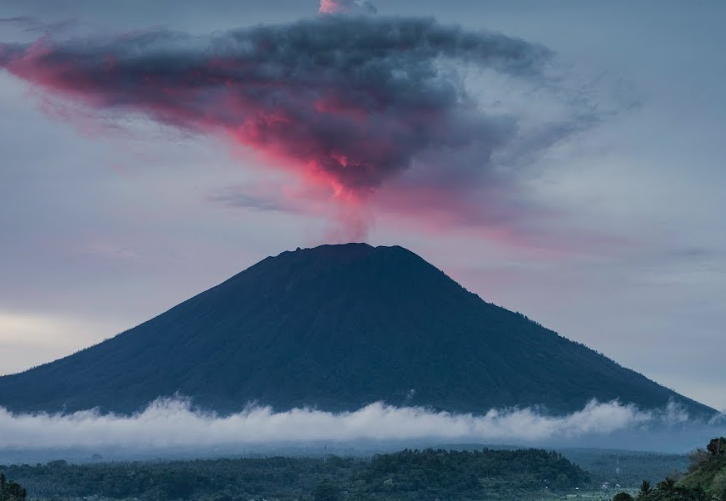
YouTube
In addition to the asteroid impact, the Earth’s volcanic activity was significantly heightened by the trauma caused to the planet’s crust. The Deccan Traps in India, one of the largest volcanic provinces on Earth, erupted violently during this period, spewing massive amounts of ash and gases into the atmosphere. These eruptions likely exacerbated the environmental conditions, contributing to the climate changes that followed the impact. The additional gases, such as carbon dioxide and sulfur dioxide, would have played a role in the long-term cooling of the Earth, further disrupting ecosystems.
12. Mass Migration of Species
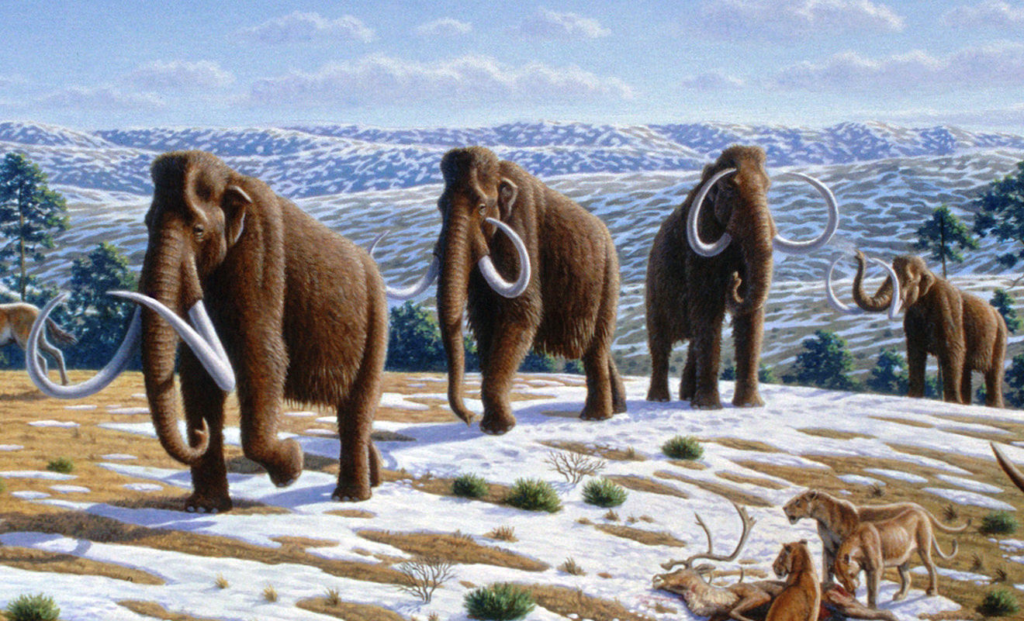
World History Encyclopedia
As the climate changed rapidly, some species attempted to survive by migrating to areas where conditions were more favorable. While the majority of species were unable to adapt in time, some animals that could move found new habitats, though the migration was fraught with challenges. Marine life, in particular, might have migrated to deeper or more temperate waters, while land animals may have sought refuge in cooler regions. These migrations were temporary solutions to a planet that had changed forever, and many species were still unable to survive the rapidly deteriorating conditions.
13. Ocean Acidification
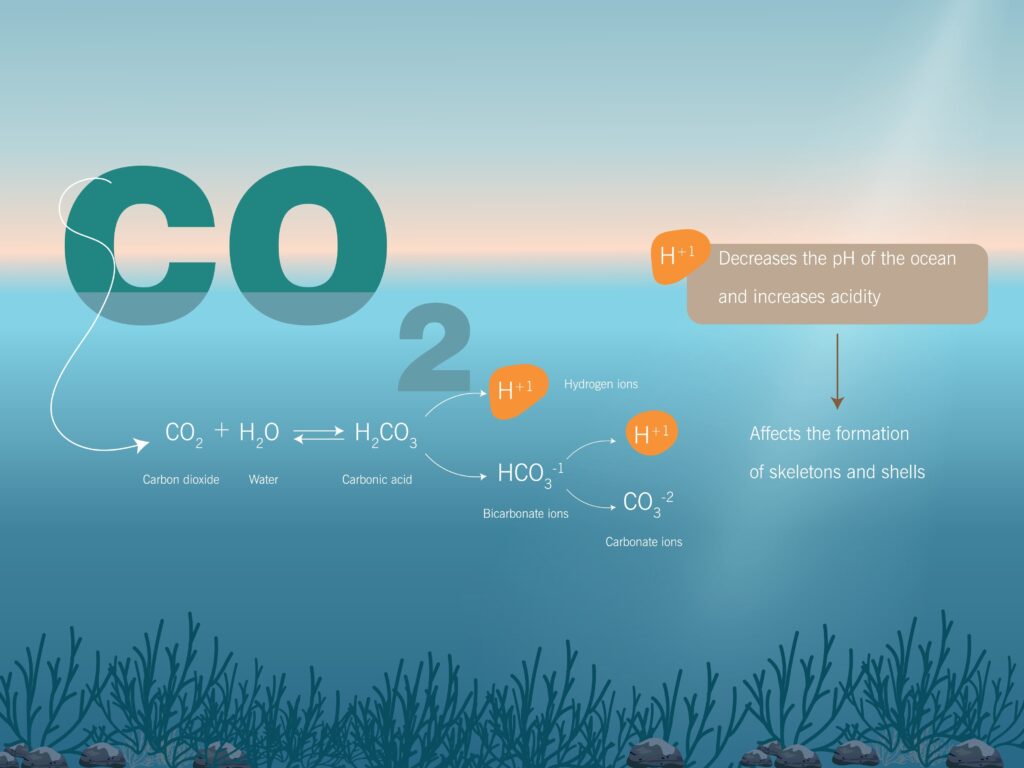
Shutterstock
The increased carbon dioxide levels in the atmosphere, combined with other environmental changes, led to ocean acidification. This chemical shift made it difficult for marine life that depended on calcium carbonate—like corals, mollusks, and certain plankton species—to survive. As the acidity of the oceans increased, marine ecosystems suffered catastrophic losses, contributing to the collapse of oceanic food chains. The loss of these marine species impacted not only ocean life but also terrestrial animals that relied on fish and other marine creatures for food.
14. Birds Survive
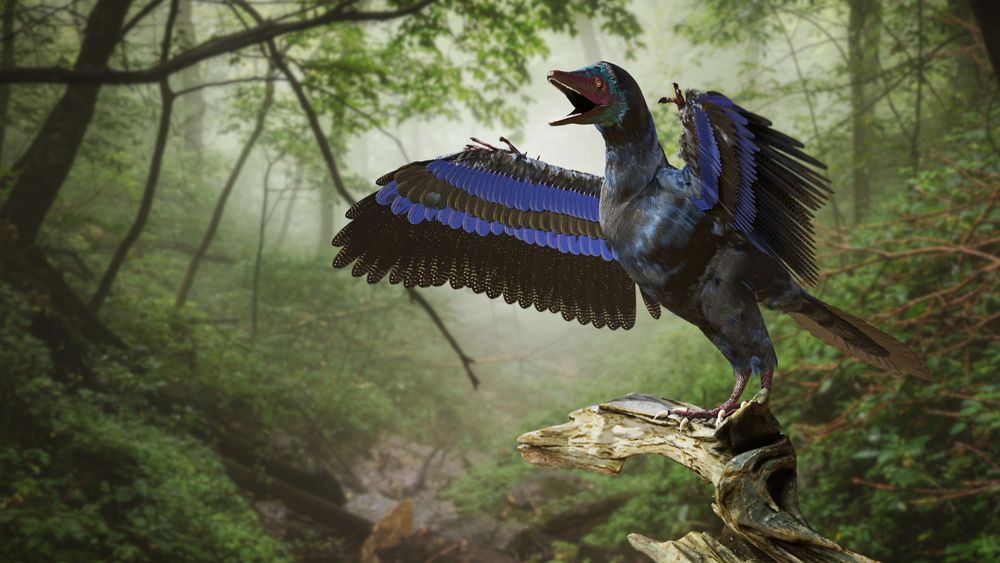
Shutterstock
While most dinosaurs perished, a group of small, feathered dinosaurs managed to survive the mass extinction event. These early birds, descended from theropod dinosaurs, were able to endure the extreme environmental changes. Over time, they evolved into the diverse and successful group of animals we know today. Birds’ ability to fly allowed them to find new areas of shelter and food sources, giving them a distinct advantage during the aftermath of the disaster. They would go on to thrive in the absence of the large, dominant dinosaurs.
15. The Collapse of Food Chains

Shutterstock
With the extinction of plants, herbivores, and many smaller animals, food chains around the world collapsed. Predators that relied on herbivores for food, such as large carnivorous dinosaurs like Tyrannosaurus rex, were left without prey. As a result, these predators perished in the wake of the mass extinction. In ecosystems both on land and in the ocean, the balance of life was shattered, and many species, both large and small, were unable to survive the massive environmental upheaval that followed the asteroid impact.
16. The End of the Pterosaurs

Rawpixel
Pterosaurs, flying reptiles that lived alongside the dinosaurs, also faced extinction as a result of the catastrophic events of the day. These flying creatures, once dominant in the skies, were unable to adapt to the changing environment. The loss of their primary food sources, combined with the collapse of ecosystems, led to the end of their reign. The extinction of the pterosaurs marked the end of an era in which flying reptiles were the rulers of the skies, leaving birds as the only surviving group of flighted animals.
17. Mass Extinction in the Oceans

Wikimedia Commons
Marine reptiles, such as the marine crocodiles and long-necked plesiosaurs, were among the many species that faced extinction during the mass die-off. The devastation caused by the asteroid impact, coupled with the subsequent environmental shifts, led to the collapse of marine ecosystems. The oceans became inhospitable to many of the species that had once thrived in their depths. The loss of these marine reptiles marked the end of a long chapter in Earth’s history, and their absence would have profound implications for the evolution of marine life.
18. A Slow Recovery

Flickr
After the asteroid impact and the extinction event, Earth’s ecosystems took millions of years to fully recover. The environmental changes were so profound that many areas of the planet remained uninhabitable for a long time. The planet slowly began to heal, with new species emerging and ecosystems gradually rebuilding. However, the world that followed the extinction of the dinosaurs was vastly different, and many of the species that had once dominated the Earth were never to return.
19. The End of the Cretaceous Period

Wikimedia Commons
The impact event marked the end of the Cretaceous period and the Mesozoic era. This was a time of significant evolutionary activity, with dinosaurs, mammals, and birds all evolving and diversifying. The mass extinction event brought this era to an abrupt end, forever altering the course of life on Earth. The end of the Cretaceous period led to the dawn of a new era, the Cenozoic, which would be marked by the rise of mammals and the eventual evolution of humans.
20. The Dawn of the Modern World
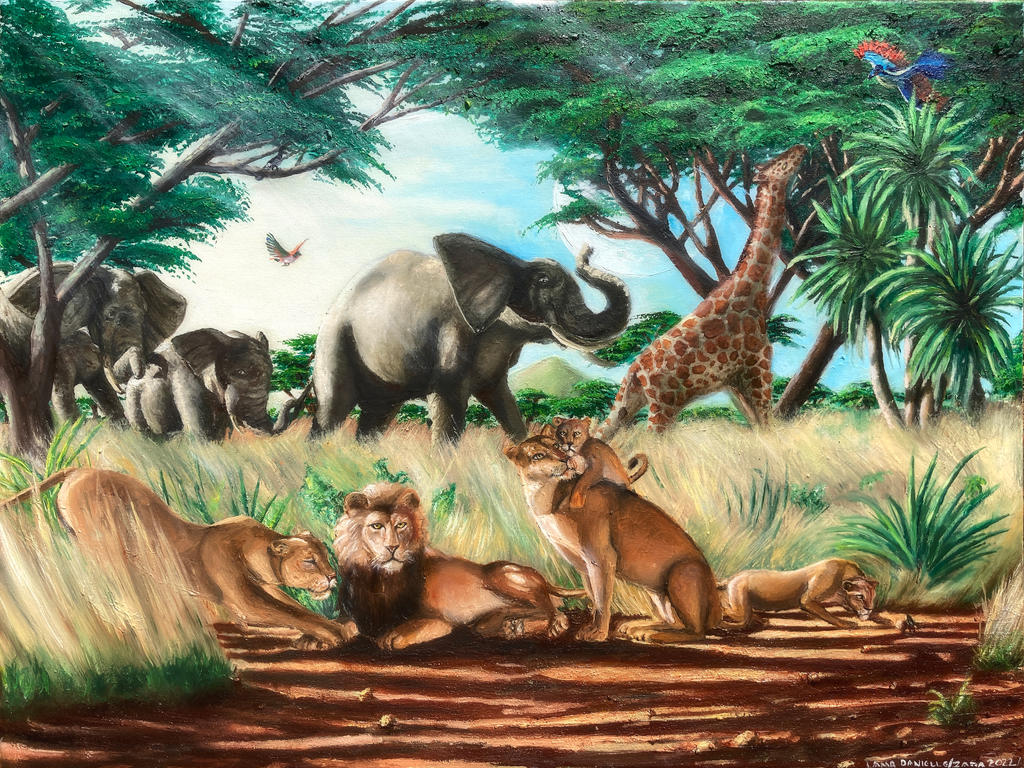
DeviantArt
Though the extinction of the dinosaurs was a tragic event, it set the stage for the rise of new life forms. With many of the planet’s ecological niches now empty, mammals, birds, and other survivors were able to thrive and evolve into the species we know today. Over millions of years, the world transformed from one dominated by giant reptiles to one where mammals ruled. This new world laid the groundwork for the eventual rise of humanity, which would go on to shape the planet in ways that no dinosaur could ever have imagined.


